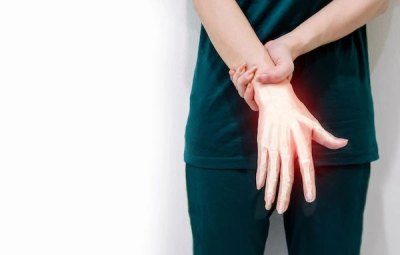How to treat tendonitis?
Author: Ondrej Stovicek
Tendonitis (technically called tendinitis) occurs as a result of unilateral mechanical damage. It can occur in any type of sport, but also at work. It is manifested by pain and sensitivity close to the joint. Although tendonitis can occur in any tendon, the hands (shoulders, elbows, wrists) are most often affected, but the knees and heels are no exception. We will advise you on how to prepare for such tendonitis.
How does tendonitis manifest itself?
The main symptom is pain at the site of the injured tendon, especially when moving. The pain can be chronic or come on suddenly and be sharp. Other symptoms include swelling, warmth, tenderness and redness.
There are 4 types of tendonitis:
- Suppurative: here the cause is a bacterial infection that spreads from the original site to the tendons.
- Rheumatic: this is similar to rheumatoid arthritis, but it is not caused by the body's immune response, but by streptococcus. This type of rheumatic tendonitis is quite painful and reduces mobility.
- Trigger finger: this is also a type of tendonitis. It most often affects the thumbs on the hands. The movement of the affected fingers is significantly jumpy or jerky.
- Tennis elbow: excessive overload of the muscles on the front of the forearm is called tennis elbow. Of course, it does not only occur during tennis. It is caused by prolonged repetition of the same movement without rest – it can be manual work, but it can also be computer work.
What is Achilles tendonitis?
It is caused by prolonged overuse of the Achilles tendon. This problem is typically faced by athletes who engage in continuous and intense physical activity, such as running, football, tennis or basketball.
However, inflammation is often not avoided by people who return to sports activities after some time, recreational athletes who only engage in exercise intermittently, or older people whose tendons tend to weaken significantly with age.
Who can get tendonitis?
Anyone can get tendonitis. However, it is more common in those who perform repetitive activities. These activities include:
- Gardening/gardening
- Woodworking
- Manual labor
- Tennis, golf, skiing, baseball (throwing and pitching).
Other risk factors for tendonitis include:
- Poor posture at work or at home
- Presence of certain diseases that can weaken muscles. These diseases may include muscle diseases: Rheumatoid arthritis, Gout/pseudogout, blood or kidney diseases.
- Adults aged 40 and older are more susceptible.
Where does tendonitis most often occur?
Tendonitis can occur in almost any part of the body where a tendon connects bone to muscle.
The most common sites are:
- Thumb
- Elbow
- Shoulder
- Hip
- Knee
- Achilles tendon
How to treat tendonitis?
Avoid activities that make the pain worse and try to rest. It is also recommended to ice the tendon on the day of the injury.
Anti-inflammatory medications that are available over the counter can also be used. Or try hemp ointment or anti-inflammatory CBD.
If the condition does not improve within about three weeks of starting self-treatment, see your doctor.
Your doctor may prescribe:
- Corticosteroid injections: Corticosteroids (often called "steroids") are often used because they work quickly to reduce inflammation and pain.
- Physical therapy: Physical therapy includes range-of-motion exercises and splinting (thumb, forearm).
- Surgery: Surgery - is rarely necessary and only in cases of serious problems that do not respond to other treatments.
Old wives' tales for tendonitis
It is generally recommended to consume more protein, magnesium, potassium and calcium. A cottage cheese wrap or various herbal wraps are also popular. A pine needle bath or increased consumption of Chinese goji berries can also help.
How does CBD work on tendonitis?
Numerous studies point to the strong anti-inflammatory properties of CBD. The study found that CBD can effectively help people manage pain in arthritis, which affects connective tissues such as ligaments and tendons.
Another study concluded that CBD oil has anti-inflammatory and immunomodulatory properties in rheumatoid diseases. The study also highlighted the low effectiveness of traditional prescription painkillers. Drugs such as opioids can even lead to uncontrolled rheumatic pain and worsen the inflammation that is the underlying cause of arthritis.
Of the products, we recommend taking either CBD drops internally or CBD coconut oil (which can also be applied to the inflammation).
Which ointment for inflammation?
If you are looking for an effective lubrication for tendonitis, we recommend trying hemp ointment with chili for muscles and joints.
We also have excellent experience with the combination of CBD warming and cooling gel.
Thanks to the active composition and CBD content, you will feel relief from the first application.


